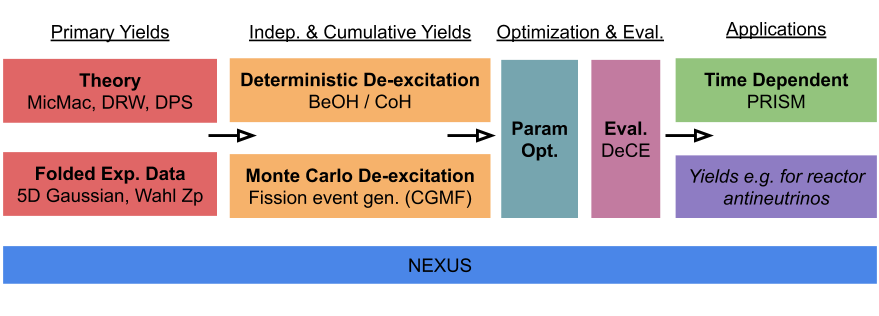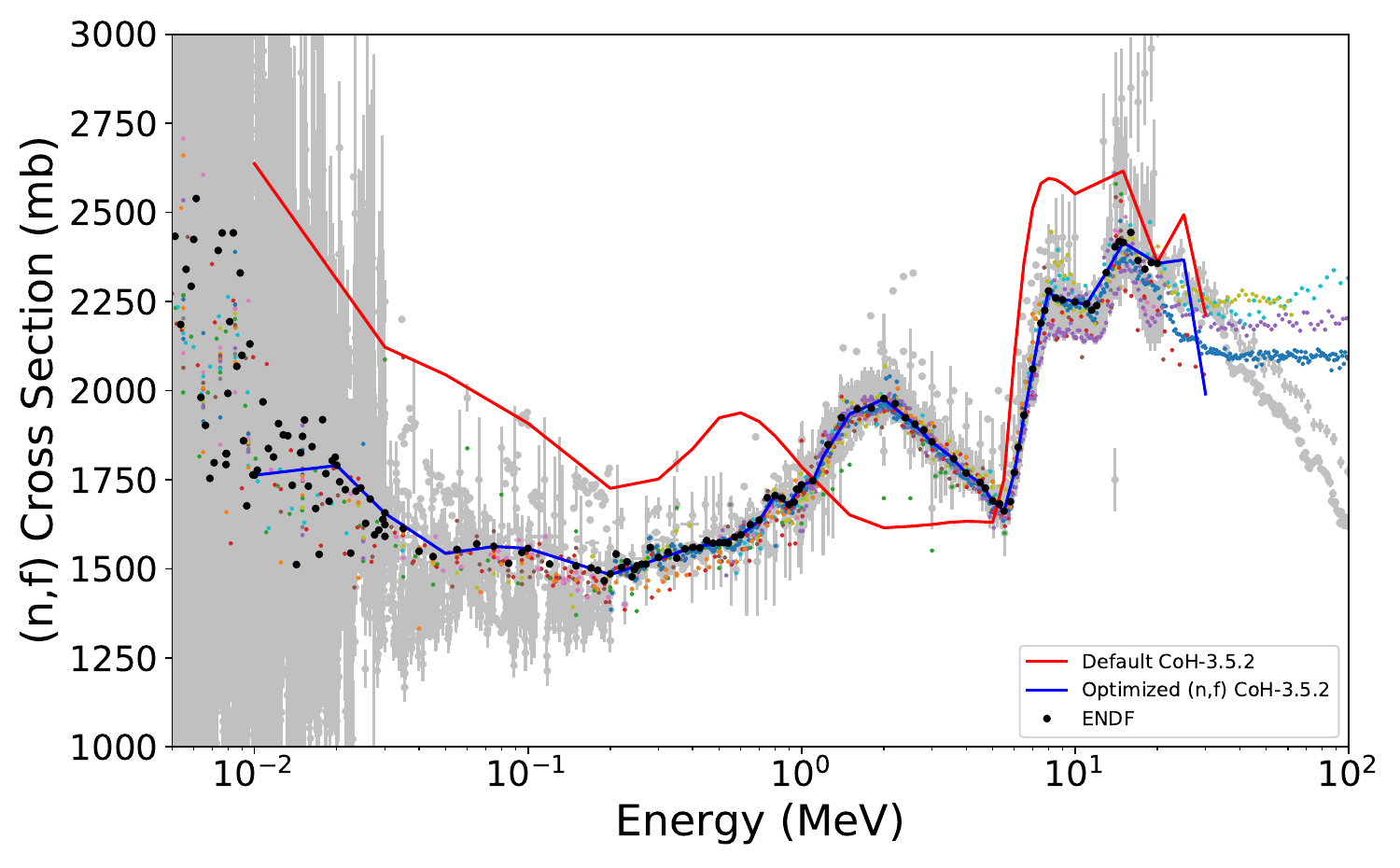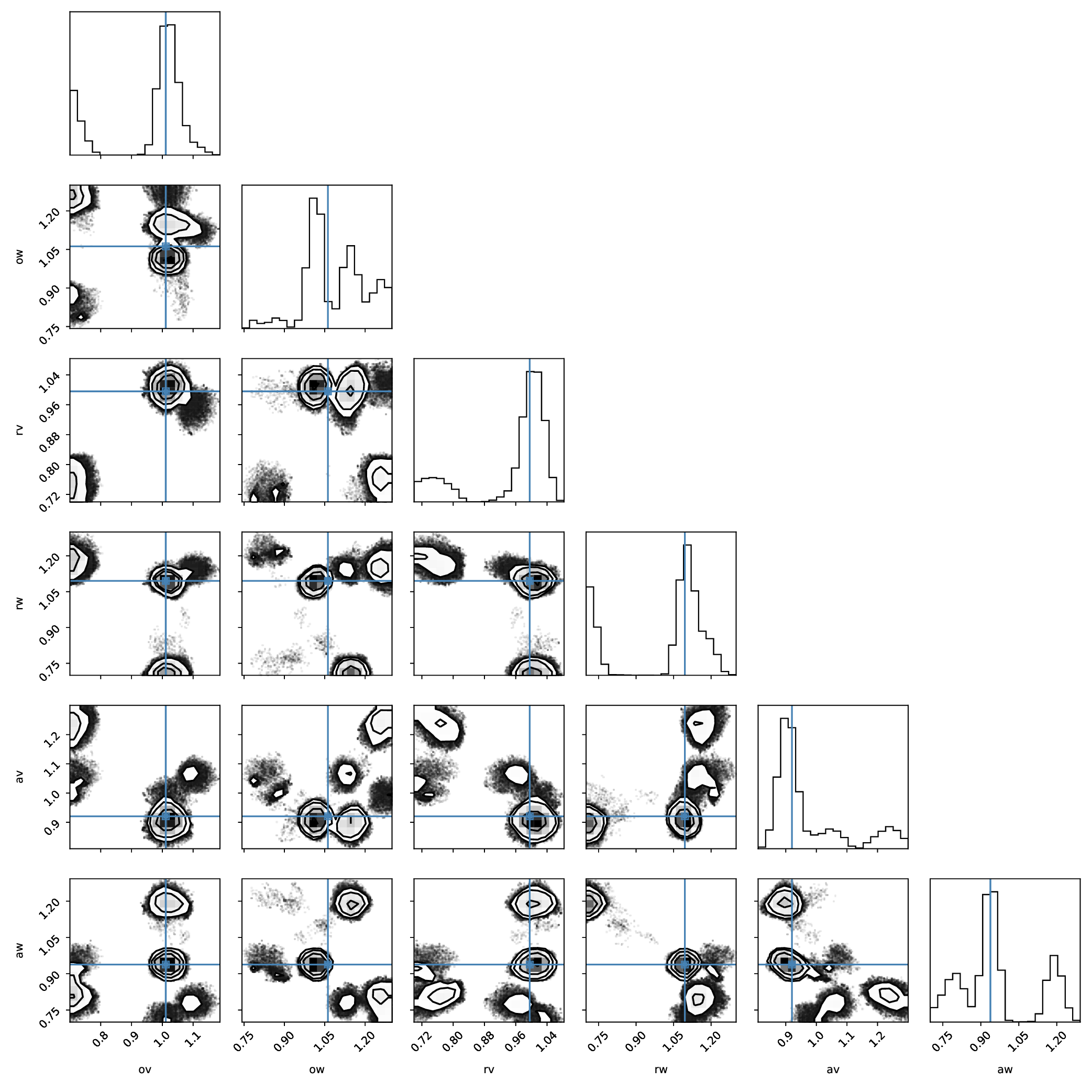
A platform for the next-generation of nuclear data evaluations
Features:
Bayesian Optimization • Version Control • Modularized with Containers • Python 3+

LA-UR-20-29759
Matthew Mumpower
Theoretical Division
Mike Herman, Toshihiko Kawano, Amy Lovell, Ionel Stetcu,
Patrick Talou

Los Alamos National Laboratory Caveat
The submitted materials have been authored by an employee or employees of Triad National Security, LLC (Triad) under contract with the U.S. Department of Energy/National Nuclear Security Administration (DOE/NNSA).
Accordingly, the U.S. Government retains an irrevocable, nonexclusive, royaltyfree license to publish, translate, reproduce, use, or dispose of the published form of the work and to authorize others to do the same for U.S. Government purposes.
Example evaluation workflow

Our current workflow combines many distinct codes and data
The problem: we need to integrate all of these interrelated parts together
NEXUS provides
code structures and marshalling that allow theory, data and evaluation to seemlessly communicate
Pu suite evaluation
Focus on consistency in evaluating all reaction channels together

Figure: $^{239}$Pu(n,f) cross section. Regularization procedure maps model to experimental data (red → blue)
Parsed ENDF, EXFOR, ran reaction model, optimized model parameters all with less than 50 lines of Python3 code!
Evaluation effort now capable of utilizing HPC machines; combination of CPU / GPU based emulators
What's new?
Focus on consistency throughout evaluation

Figure: Bayesian opt. of optical model parameters with the NEXUS code
New Data
New ChiNu data for Pompt Fission Neutron Spectrum (PFNS)
TPC data for fission cross section (in coordination with IAEA)
New Theory (model improvements)
Evaluate prompt-nu and FPY in a consistent way with the PFNS evaluation [CGMF / BeoH]
Include prompt fission $\gamma$-rays (PFGS) [BeoH]
New inelastic scattering model using the Engelbrecht-Weidenmuller transformation [CoH]